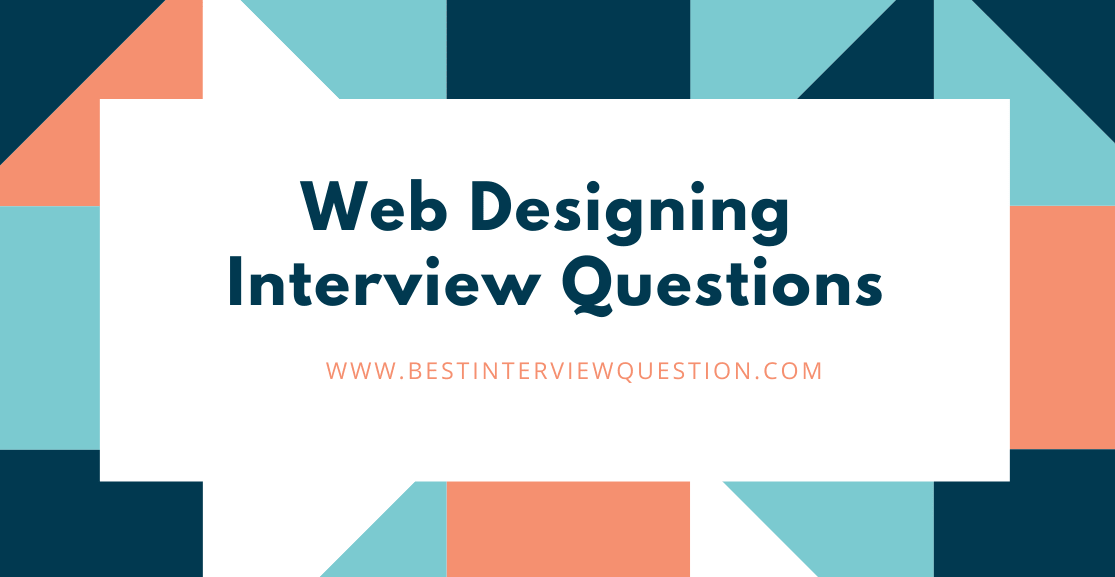
Planning to make your career in technical stuff is a great choice. Being a web designer is one of them. There is nothing to fear about web designing interview questions, especially when you already have practiced them.
If you are one of those who is looking for a web designer job and preparing yourself for the interview, then you land up at the right place. Our team has done a wide search over the internet and collated the list of web designer interview questions and answers. With the help of these questions and answers, you can easily impress your interviewer.
Most Frequently Asked Web Designing Interview Questions
Here in this article, we will be listing frequently asked Web Designing Interview Questions and Answers with the belief that they will be helpful for you to gain higher marks. Also, to let you know that this article has been written under the guidance of industry professionals and covered all the current competencies.
For the website designing, commonly used languages and platforms are:
- HTML which is used to design the base templates
- CSS which is used for styling the pages
- JS is used to code the functionality
- PHP is being used for server-side scripting.
The function of the cascading style sheet is to provide the look and feel to any of the websites. They help manage and provide the font styles and sizes, color combinations as required to develop the web page. One thing to keep in mind is a single change in the CSS code will impact the entire website.
The reason behind putting the comment is to explain something concerning the code.
The syntax of comment starts with “<!--” and ends at “ -->”
< !-- Insert your comment here. -->
The term DOCTYPE is the method to convey to the browser about the type of HTML which has been used on the web page. With the help of this declaration, the browser determines how to render the web page. If you are not declaring the DOCTYPE, then it may incorrectly load the page.
It is used to be a document that contains all the information regarding the styling of many of the web pages or the HTML files.
This can be linked under the HEAD element with the LINK tag. Make sure the external CSS file has the correct extension such as style.css.
The responsive design is the way to build websites that provides an excellent view and communicating experience. The agenda of the responsive design is to provide the best customer experience by reducing the scrolling, resizing, and doing zoom in - zoom out on various devices.
The most trending framework is Bootstrap for creating a responsive web design.
| visibility:hidden | display:none |
|---|---|
| This is the property which is used to hide the element, however, it occupies the space in the actual layout. | This is the property that is used to remove the element completely without occupying any space in the layout. |
Some Jquery functions used for web designing are:
- HTML/DOM manipulation
- CSS manipulation
- HTML event methods
- Effects and animations
- AJAX
- Utilities
The best thing about the JQuery is, it contains plugins for almost everything out there.
By asking this question, the interviewer is keen to know about your approach towards the work. He or she wants to judge you that how it will be easier for them to work with you and want to judge your attitude regarding how you care and communicate with their clients.
Here you can tell about the steps that should be taken for the designing process:
- Study on the client’s ask
- Research it
- Brainstorming on the things related to it
- Create a rough sketch
- Start implementation
This question is depends on your knowledge. If you have the prior experience of UX designing, then share it with the interviewer. If not, then it is recommended to read a bit about the UX design and its concept.
There are multiple ways by which a website can be optimized.
Here you can simply say:
- By reducing the JS and CSS code which will save hundreds of kilobytes for every page to get load.
- All the assets must be compressed in the applicable format with excellent settings.
- By serving responsive images
- Enabling the caching mechanism at the server-side.
Ideally, the single web page should contain only one H1 tag, until and unless there will be different “Article” and “Section” elements. In this scenario, they can have their H1 tags.
Yes, it matters a lot for the search engines to read the code of the web page and to depicts it’s content. If the H1 tag is not being used properly then the website’s SEO performance will be impacted.
For combining the two fonts accurately, we should look out for the resemblance and discrepancies between them.
A combination of two fonts works very well if they both are different from each other but have one common thing to help them in connecting, this thing is generally known as “Complementary fonts”.
Some example of fonts which works nicely together are:
- Future Bold and Souvenir
- Times new roman and Garamond
- Future and Helvetica
All the image compressions have their purposes and techniques to use them.
JPEG Compression: It reduces the size of the image by targeting the areas of identical colors. This JPEG compression is useful for photos, gradients, illustrations, drawings, and other similar colorful or rich images.
PNG Compression: It works by minimizing the number of colors used in the image. PNG compression is a great choice for logos, signs, icons, screenshots, and UI elements.
It is a structure that is used to provide a system where designers can arrange the content by encompassing the series of vertical and horizontal lines.